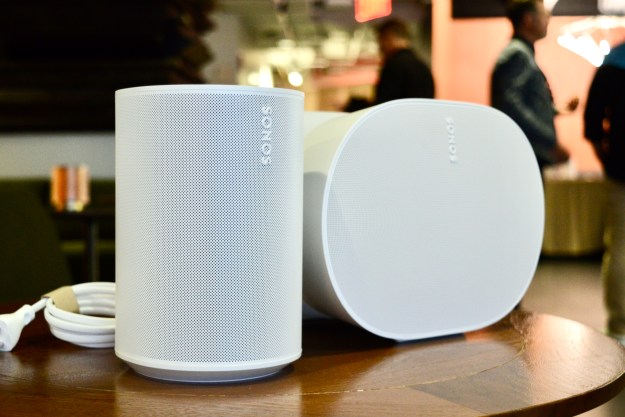
The speakers were unveiled at the Rocky Mountain Audio Fest in Denver, CO. The Verus Grand family is a high-end complement to the company’s Aperion Intimus line of home theater speakers.
“The goal for the Aperion Verus Grand line was to create an accurate, uncolored, lifelike experience,” says Ken Humphreys, Aperion’s lead speaker engineer and a 25-year veteran of speaker system and component design for the audio industry’s most respected brands. “To do that, our team built the entire speaker system from the bottom up, engineering each component for maximum sonic impact while keeping the cost in reach of most home theater audio buffs.”
“A key part of the solution is our new Axially Stabilized Radiator tweeter, which takes the burden of reproducing upper-mid frequencies off the mid-range driver,” Humphreys adds. “That allows each driver to do the job it does best. The result is wider dispersion for an expanded soundstage and lower distortion to boost clarity.”
Aperion Verus Grand includes:
- 3-Way, Sealed Enclosure design
- One 1″ Aperion Axially Stabilized Radiator silk dome tweeter
- One 4″ Woven Kevlar Mid-range driver with Aluminum Phase Plug
- Two 6″ Woven Kevlar Woofers with Butyl Rubber Surrounds
- Curvilinear cabinet with compound angles and internal bracing
- Furniture-grade gloss cherry wood veneer or gloss piano black finish
- VoiceRight phase correction switch for bass optimization
- 5-Way Gold-plated Binding Posts
- Acoustically transparent cloth -covered metal grille
Pricing for the new Aperion Verus Grand line of home theater speakers is $1,798 per pair for the Verus Grand Tower; $699 for the Verus Grand Center; and $598 per pair for the Verus Grand Bookshelf. Pre-orders are now being accepted, and the system will ship on October 30, 2010. A 10-year limited warranty covers all defects in material and workmanship. The product also comes with free shipping, free lifetime support and a 30-day in-home trial.
Editors' Recommendations
- We’ve tried them all — these are the best Sonos speakers in 2024
- Best Bluetooth speaker deals: Save on Bose, Sonos, JBL, and more
- The best Bluetooth speakers for 2024: Marshall, Soundcore, JBL, and more
- The best speakers for 2024: great hi-fi options for music and more
- KEF launches a more affordable version of its coveted LSX II bookshelf speakers


